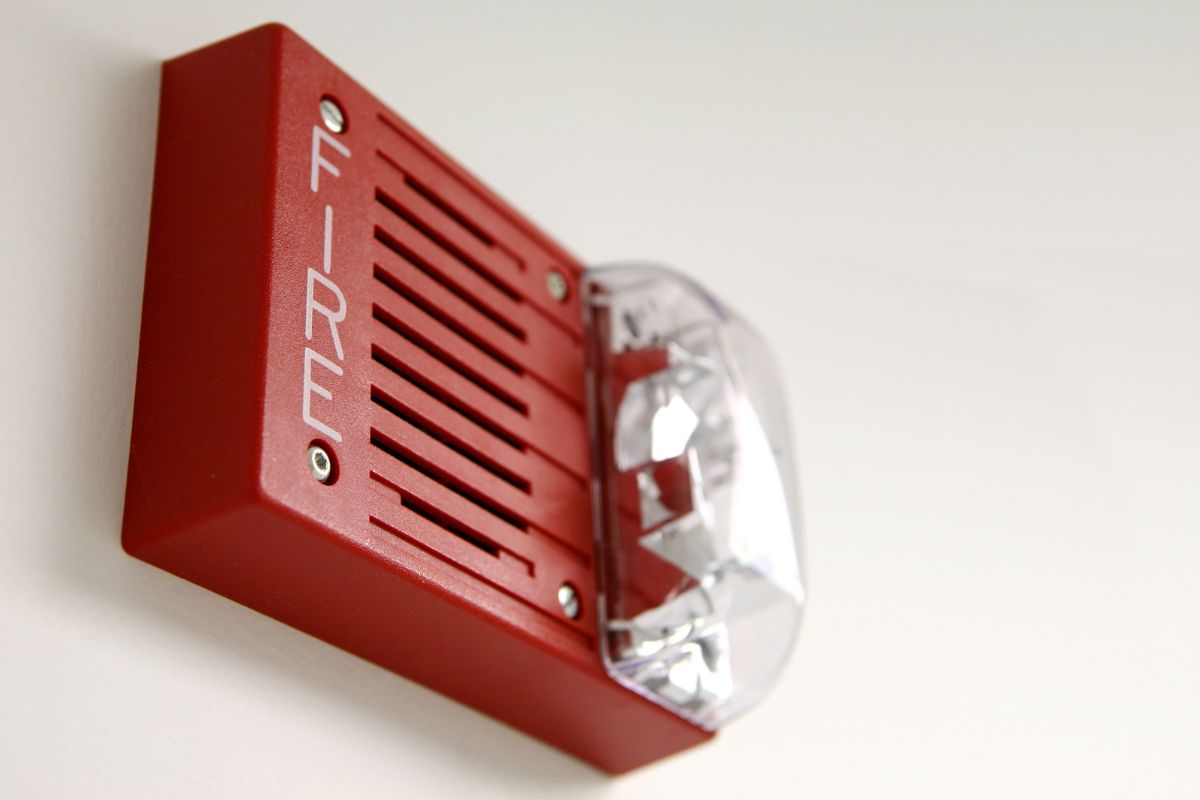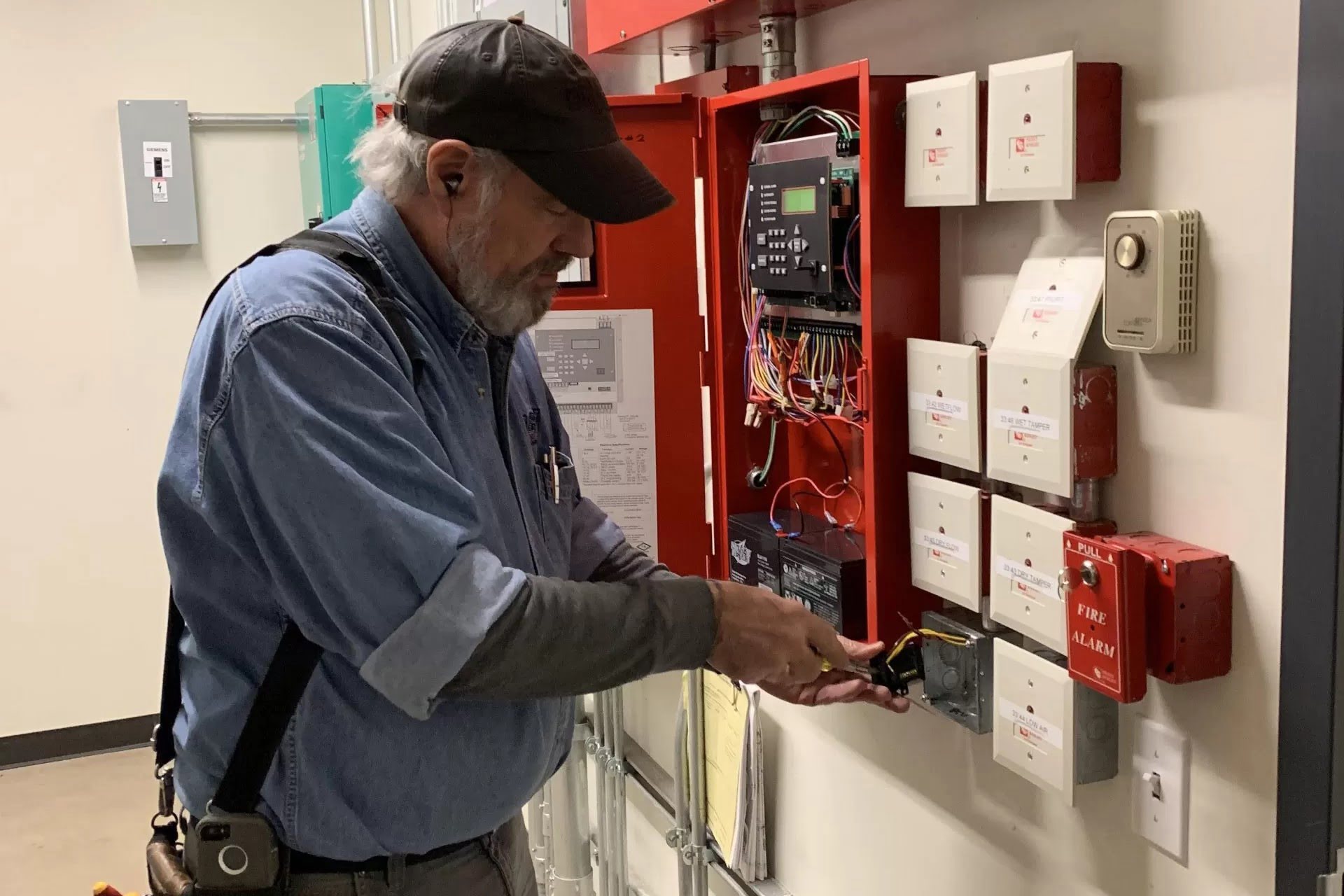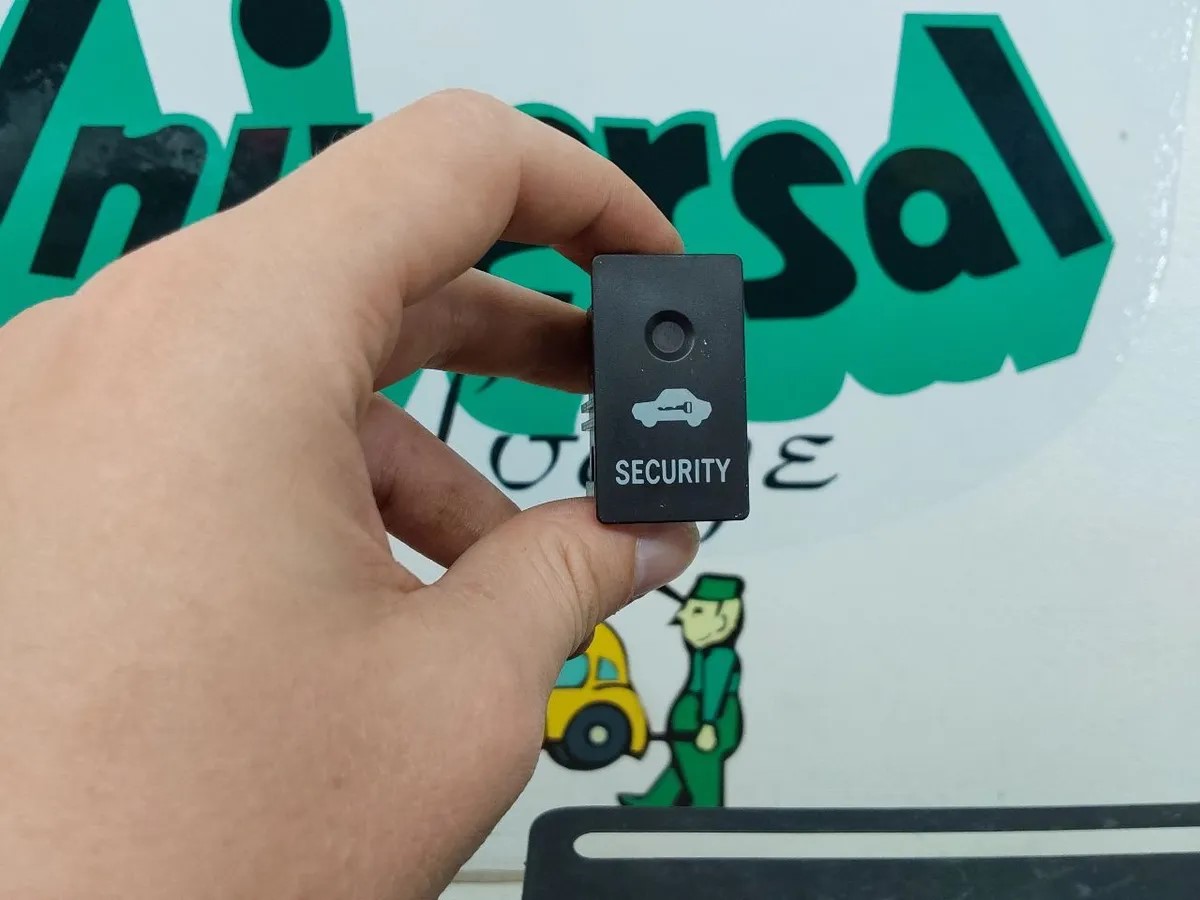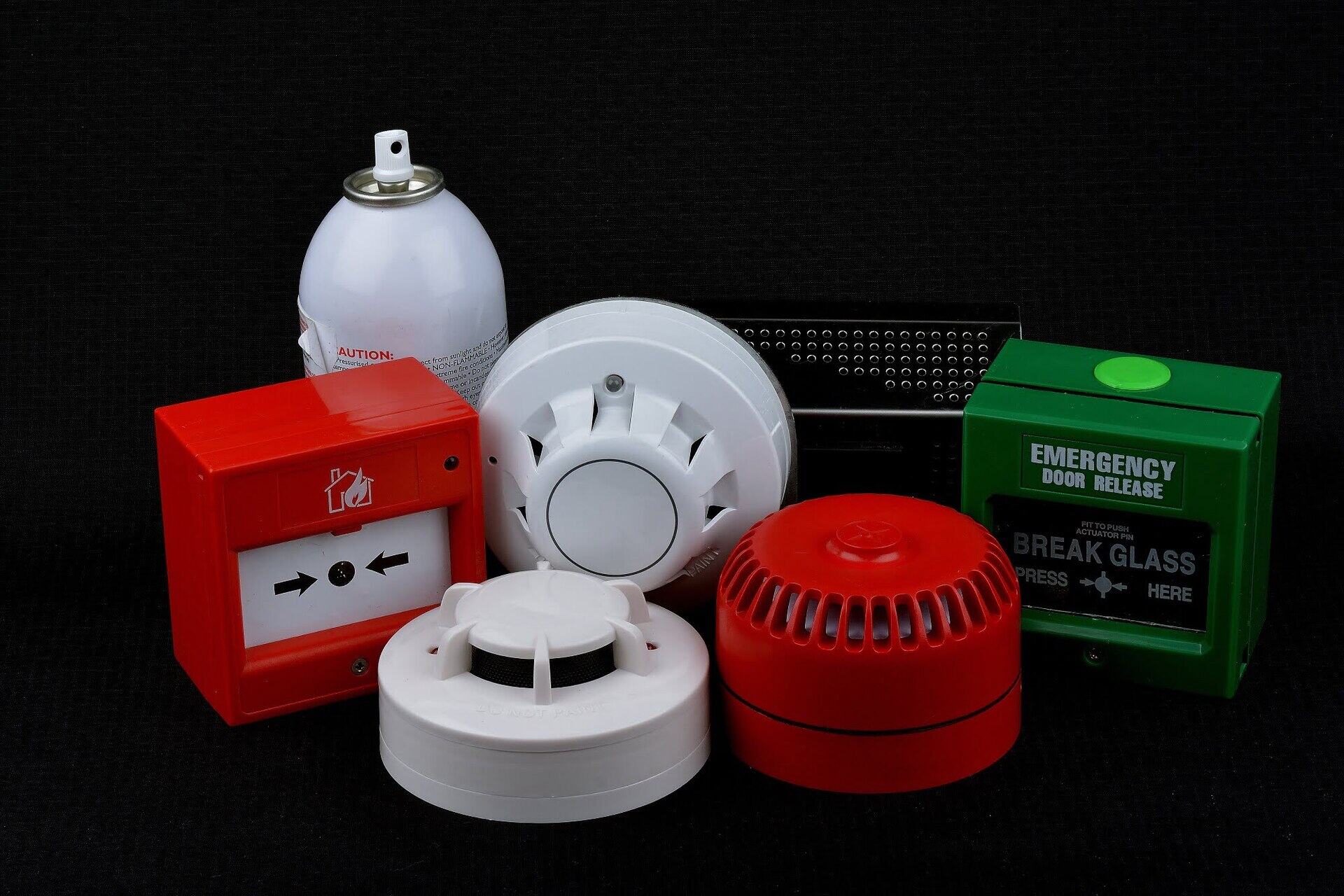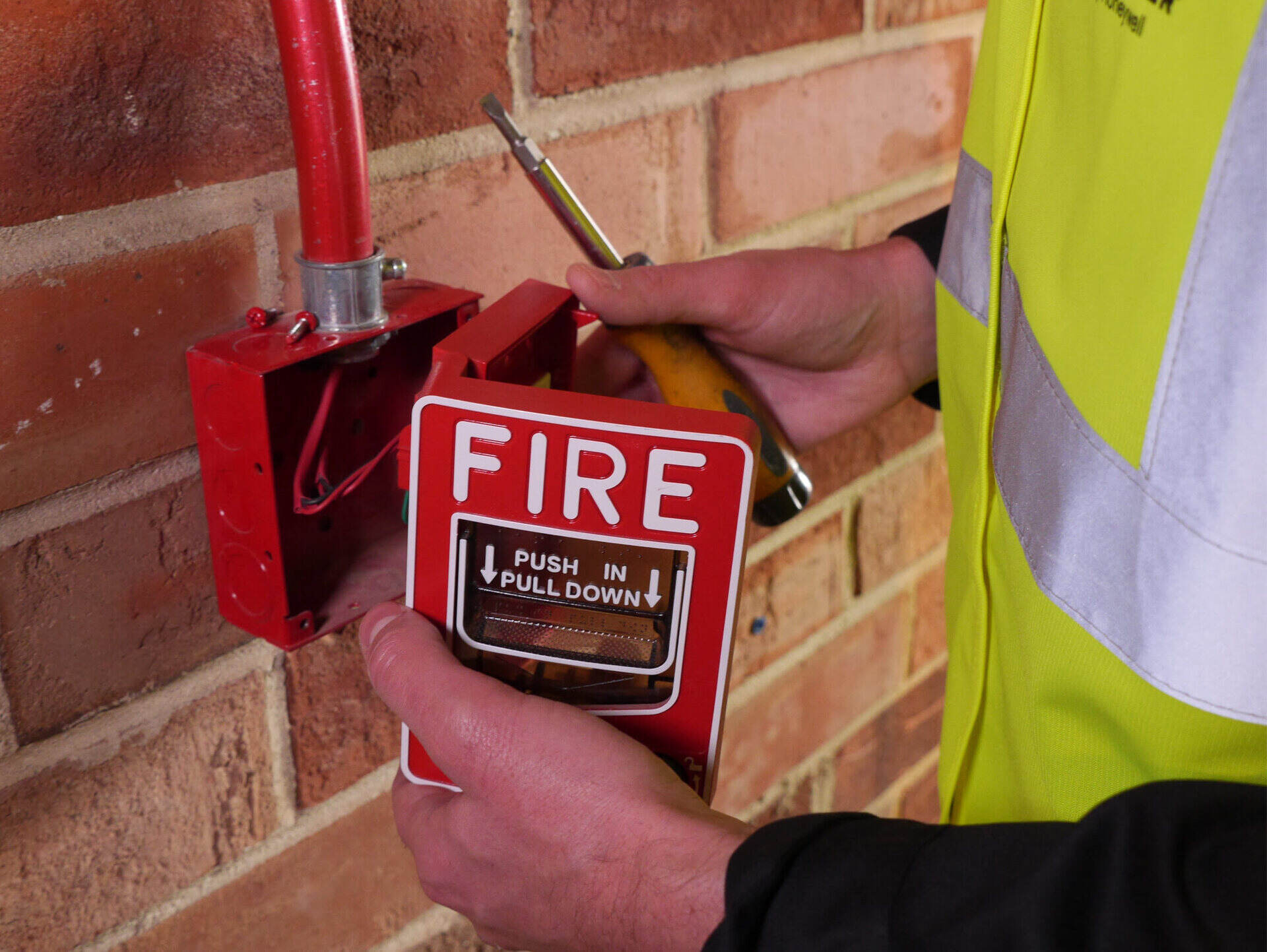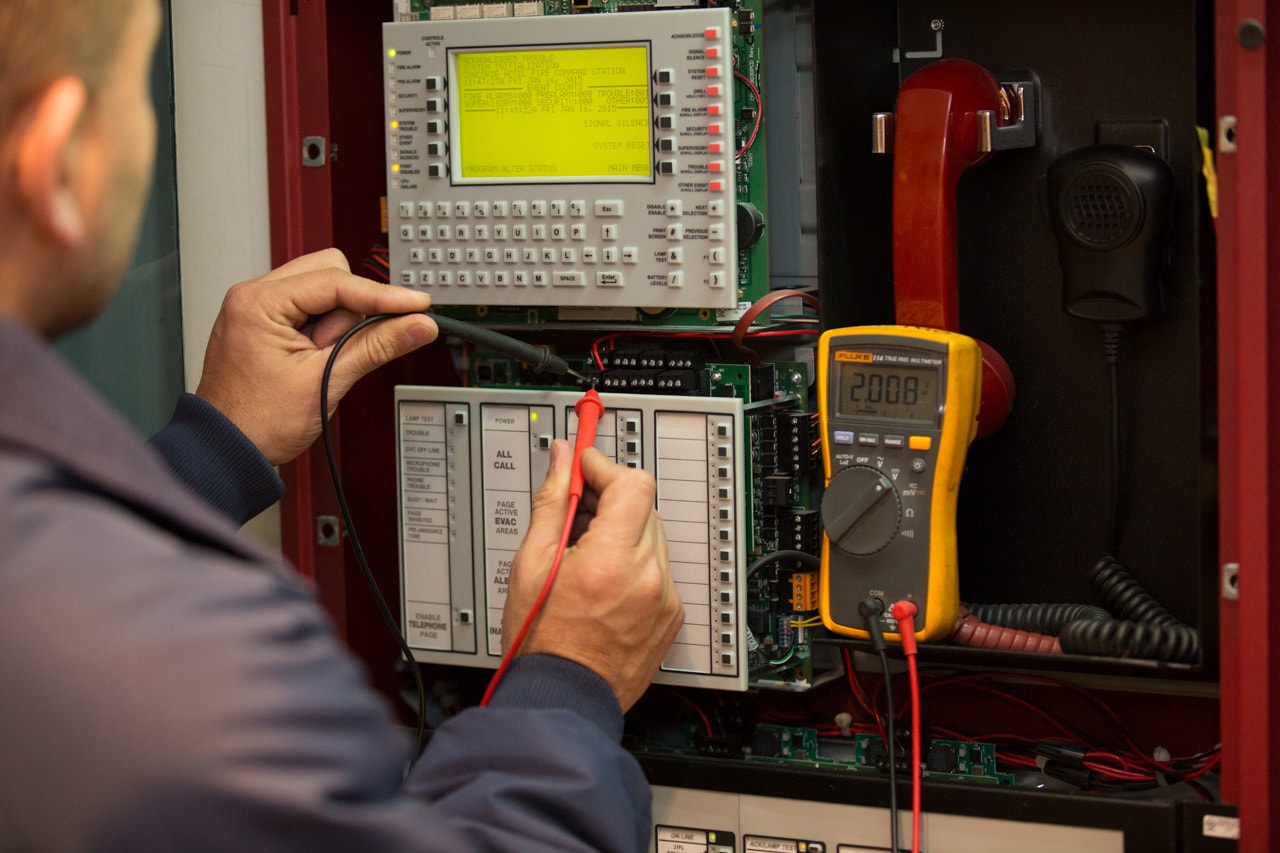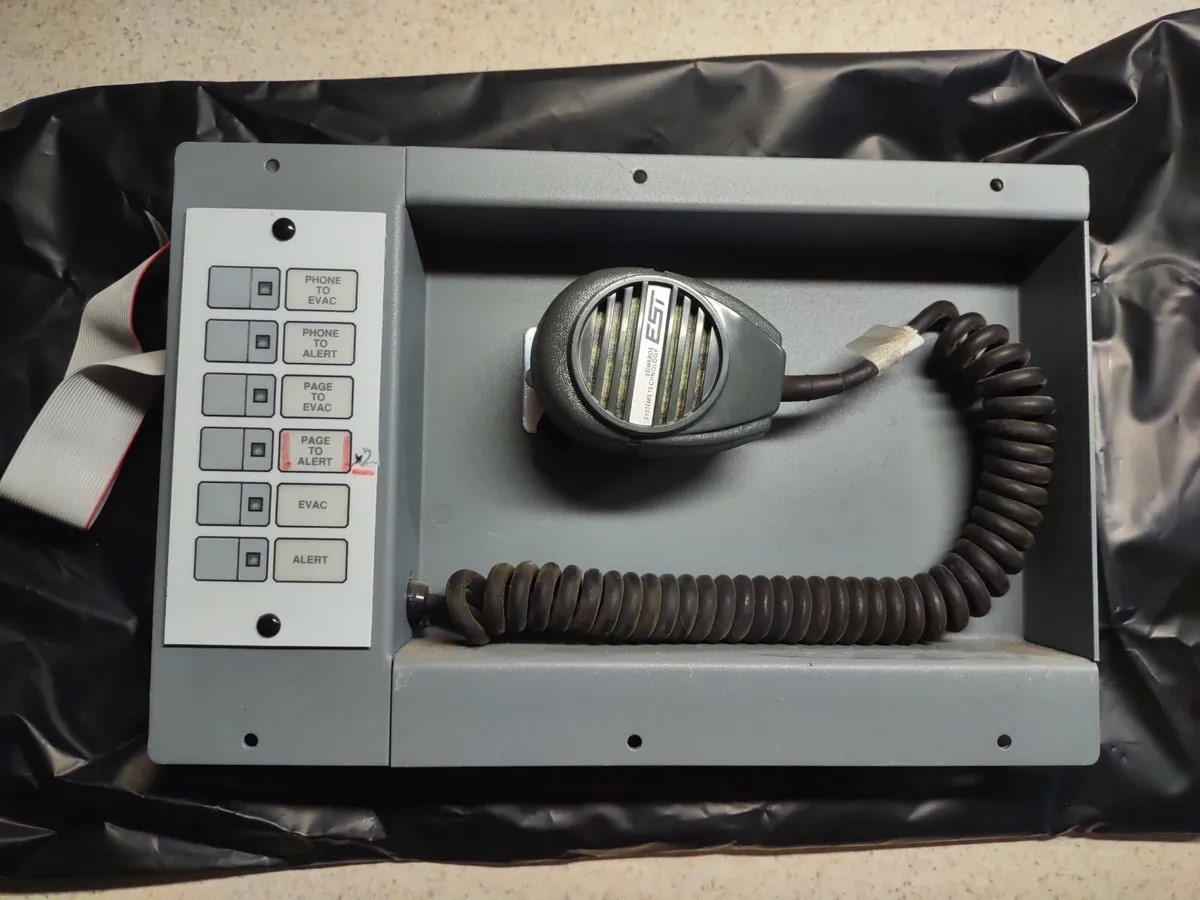Home>Home Security and Surveillance>How To Reset Fire Alarm Systems Password
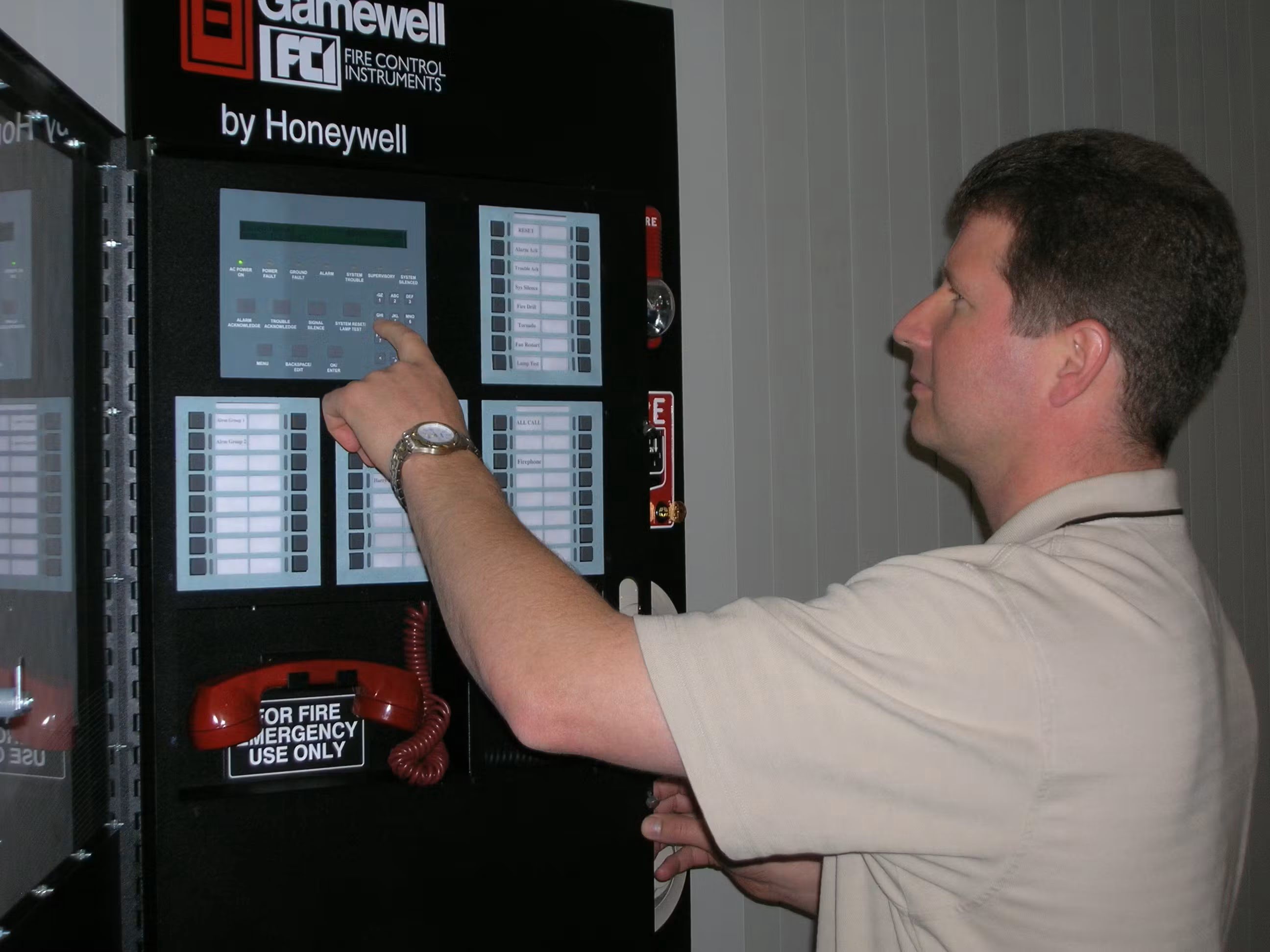

Home Security and Surveillance
How To Reset Fire Alarm Systems Password
Modified: March 6, 2024
Forgot the password for your fire alarm system? Learn how to reset it with our step-by-step guide. Enhance your home security and surveillance with these helpful tips.
(Many of the links in this article redirect to a specific reviewed product. Your purchase of these products through affiliate links helps to generate commission for Storables.com, at no extra cost. Learn more)
Introduction
Home security is a top priority for homeowners around the world. One crucial aspect of a comprehensive security system is a fire alarm system. These systems play a vital role in keeping homes and occupants safe by detecting and alerting them to the presence of a fire. To ensure the utmost security and control, many fire alarm systems are password protected.
Key Takeaways:
- Resetting the password on your fire alarm system is crucial for maintaining security and control. Follow the step-by-step process to ensure your system functions optimally and keeps your home safe from fire risks.
- Identify your fire alarm panel model, gather necessary tools, and follow specific instructions to reset the password. Testing the system after the reset ensures it recognizes the new password and functions as expected.
Read more: How To Reset A Nest Thermostat Password
Understanding Fire Alarm Systems Passwords
A fire alarm system password acts as a digital lock, safeguarding the system’s settings and preventing unauthorized access. The password is typically required to perform functions such as arming or disarming the system, adjusting settings, and reviewing system logs. This security measure ensures that only authorized individuals can make changes to the system.
Reasons for Resetting Fire Alarm Systems Passwords
There are several reasons why homeowners may need to reset the password on their fire alarm systems. It could be due to forgetting the current password, acquiring a property with an existing system and unknown password, or the need to change the password for security reasons. It’s essential to understand the reasons for resetting the password to ensure the appropriate method is used.
Precautions before Resetting Fire Alarm Systems Passwords
Before resetting the password on a fire alarm system, it’s crucial to take certain precautions. These precautions ensure the safety and functionality of the system throughout the reset process:
- Consult the system’s user manual or contact the manufacturer’s customer support for guidance specific to your model
- Ensure you have the necessary documentation, including user manuals, installation guides, and any special codes or passwords provided during system setup
- Have the required tools readily available, such as a screwdriver or other tools for accessing the control panel
- Notify any monitoring service or central station associated with the fire alarm system to prevent any false alarms or unnecessary emergency responses
- Consider seeking professional assistance to ensure compliance with local building codes and regulations
Methods to Reset Fire Alarm Systems Passwords
There are several methods to reset the password on fire alarm systems. The best method to use will depend on the specific system and its manufacturer. It’s important to note that these methods may vary, so always consult the system’s user manual or contact the manufacturer’s support for specific instructions. Here are some common methods:
- Method 1: Default Manufacturer Password: Some fire alarm systems come with a default manufacturer password that can be used to reset the user password.
- Method 2: Default Installer Password: In certain cases, fire alarm systems also have a default installer password that allows the authorized installer to reset user passwords.
- Method 3: Master User Code Reset: If you have access to the master user code for the fire alarm system, you can use it to reset the password to a new one.
- Method 4: Factory Reset: A factory reset is typically the last resort when all other methods fail. It restores the fire alarm system to its original factory settings, including removing any passwords or customized configurations.
Read more: How To Reset A Wi-Fi Router Password
Method 1: Default Manufacturer Password
Some fire alarm systems come with a default manufacturer password that can be used to reset the user password. The default password is set by the manufacturer and is typically provided in the system’s user manual or documentation. This method is commonly used for system initialization or in situations where the user forgets the password.
Resetting the password using the default manufacturer password is a straightforward process. Here are the general steps to follow:
- Refer to the user manual or documentation provided with the fire alarm system to locate the default manufacturer password.
- Access the system’s control panel using the necessary tools, such as a screwdriver.
- Enter the default manufacturer password into the control panel keypad or user interface. The specific entry method may vary depending on the system’s design.
- Once the correct password is entered, follow the prompts on the control panel display to reset the user password.
- Choose a new password and enter it as per the system’s requirements. Ensure the new password is secure and not easily guessed.
- Once the new password is set, exit the password reset mode and test the system to ensure it functions correctly.
It’s important to note that using the default manufacturer password for password reset carries some security risks. These default passwords are well-known within the industry, making the system more vulnerable to unauthorized access. Therefore, it is highly recommended to change the password to a unique and secure one immediately after using the default manufacturer password.
If you are unsure about using the default manufacturer password or have difficulty finding the correct password for your fire alarm system, it’s advisable to refer to the system’s user manual or contact the manufacturer’s customer support for assistance. They can provide the necessary guidance to ensure a successful reset without compromising system security.
Method 2: Default Installer Password
In certain cases, fire alarm systems may have a default installer password that can be used to reset user passwords. The default installer password is typically assigned to authorized installers to ensure they can access and configure the system during installation or maintenance.
Resetting the password using the default installer password follows a similar process as the default manufacturer password method. Here are the general steps to follow:
- Consult the system’s user manual or documentation to locate the default installer password. This information is typically provided by the manufacturer.
- Access the control panel of the fire alarm system using the necessary tools, as mentioned in the precautions section.
- Enter the default installer password into the control panel keypad or user interface. The specific entry method may vary based on the system’s design.
- Once the correct password is entered, follow the prompts on the control panel display to reset the user password.
- Choose a new password and enter it as per the system’s requirements. Select a secure password that is not easily guessed.
- Exit the password reset mode and test the system to ensure it functions correctly with the new password.
As with the default manufacturer password method, it is essential to change the password to a unique and secure one immediately after using the default installer password method. This helps protect the system from unauthorized access.
If you are uncertain about the default installer password or encounter any difficulties during the password reset process, referencing the system’s user manual or contacting the manufacturer’s customer support is recommended. Their expertise and guidance will ensure a successful reset of the password without compromising system security.
Method 3: Master User Code Reset
In situations where you have access to the master user code for the fire alarm system, you can use it to reset the password to a new one. The master user code is a special code that carries higher privileges and allows for system configuration and password reset.
Resetting the password using the master user code is a straightforward process. Follow these general steps:
- Identify the master user code associated with your fire alarm system. This code is typically provided in the system’s documentation or user manual. If you do not have the master user code, contact the system’s manufacturer or installer for assistance.
- Access the control panel of the fire alarm system using the necessary tools as mentioned in the precautions section.
- Enter the master user code into the control panel keypad or user interface. Refer to the system’s user manual for the specific entry method.
- Once the correct master user code is entered, navigate to the password reset section of the control panel.
- Follow the prompts on the control panel display to reset the user password.
- Choose a new password and enter it as per the system’s requirements. Ensure the new password is secure and not easily guessed.
- Exit the password reset mode and test the system using the new password to ensure it functions correctly.
It’s crucial to keep the master user code secure and only share it with authorized individuals. The master user code grants extensive control over the fire alarm system, so it should only be used for password resets and system configuration when necessary.
If you are unsure about the master user code or encounter any difficulties during the password reset process, referring to the system’s user manual or reaching out to the manufacturer’s customer support is advisable. They can provide specific instructions and guidance to help you successfully reset the password without compromising system security.
Method 4: Factory Reset
If all other methods fail or you are unable to access the default manufacturer password, default installer password, or master user code, a factory reset is typically the last resort to reset the password on a fire alarm system. A factory reset restores the system to its original factory settings, including removing any passwords or customized configurations.
Performing a factory reset should be approached with caution because it erases all settings and configurations on the fire alarm system. It essentially returns the system to its initial state as if it were just out of the factory. Here are the general steps to perform a factory reset:
- Refer to the system’s user manual or contact the manufacturer’s customer support to ensure a factory reset is the recommended method for your specific fire alarm system.
- Access the control panel of the fire alarm system using the necessary tools as mentioned in the precautions section.
- Locate the factory reset button or switch on the control panel. This can typically be found inside the panel or near the circuit board.
- Press and hold the factory reset button or switch for the specified duration, usually several seconds.
- Release the button or switch and wait for the system to reset. This process may take a few minutes, during which the system will reboot.
- Once the system has completed the factory reset, it will be restored to its default settings, including the removal of any passwords.
- Set up the fire alarm system again from scratch, following the initial installation process, including configuring new passwords and system settings.
It’s important to note that performing a factory reset should be undertaken as a last resort, as it erases all customized settings and configurations. It is recommended to consult the system’s user manual or contact the manufacturer’s customer support for specific instructions on performing a factory reset for your fire alarm system.
If you need to reset the password for a fire alarm system, contact the manufacturer or a qualified technician for assistance. They will be able to guide you through the process and ensure the system is reset properly.
Read more: How To Reset HVAC Unit
Steps to Reset Fire Alarm Systems Passwords
Resetting the password on a fire alarm system requires careful execution to ensure a successful reset without compromising the system’s functionality or security. Here are the steps to follow:
- Step 1: Identify the Fire Alarm Panel Model: Determine the make and model of your fire alarm panel. This information can usually be found on the control panel, inside the user manual, or by contacting the system’s manufacturer or installer.
- Step 2: Gather Required Documentation and Tools: Refer to the system’s user manual and gather any necessary documentation, such as user guides, installation manuals, or programming guides. Additionally, ensure you have the required tools, such as a screwdriver, to access the control panel.
- Step 3: Disconnect Power Supply: Prior to performing any maintenance or password reset, disconnect the power supply to the fire alarm system to prevent any accidental activations or electrical hazards.
- Step 4: Access Control Panel: Use the necessary tools to access the control panel of the fire alarm system. Carefully remove any covers or panels to gain access to the control panel.
- Step 5: Reset Password Using Selected Method: Depending on the method chosen to reset the password, follow the specific instructions provided by the system’s manufacturer or installer. This may involve entering a default password, using a master user code, or performing a factory reset.
- Step 6: Reconnect Power Supply: Once the password reset is complete, reconnect the power supply to the fire alarm system.
- Step 7: Test and Verify Reset Password: Test the fire alarm system to ensure all functions and settings are working correctly. Verify that the password has been successfully reset and that you can access the system using the new password.
It’s essential to carefully follow each step and consult the system’s user manual or contact the manufacturer’s customer support for any specific instructions or troubleshooting guidance. By doing so, you can confidently reset the password on your fire alarm system while maintaining its functionality and security.
Step 1: Identify the Fire Alarm Panel Model
Before attempting to reset the password on a fire alarm system, it is crucial to identify the specific make and model of the fire alarm panel. This information is essential as it will determine the appropriate steps and methods for resetting the password. The fire alarm panel model can usually be found on the control panel itself, inside the user manual, or by contacting the system’s manufacturer or installer.
Identifying the fire alarm panel model can be done by following these steps:
- Locate the control panel of the fire alarm system. It is usually mounted on a wall or in a designated control room.
- Inspect the control panel for any labels, stickers, or badges displaying the manufacturer’s name and model information. This information is typically found on the front or inside the panel.
- If there are no visible labels or stickers, open the control panel using the appropriate tools such as a screwdriver.
- Inside the control panel, look for any printed information or tags attached to the circuit boards or components. This information may include the model number or serial number of the fire alarm panel.
- If you cannot locate the model information from the control panel, refer to the system’s user manual or documentation. The user manual often contains details about the model, including its name and specifications.
- If the user manual is not readily available, contact the fire alarm system manufacturer’s customer support or the company that installed the system. They will be able to assist you in identifying the model based on the serial number or other details.
Identifying the fire alarm panel model is critical as different manufacturers and models may have variations in the password reset process. Each model may have its own specific steps and methods that need to be followed to ensure a successful reset. By knowing the model, you can access the correct user manual or seek assistance from the manufacturer or installer for accurate instructions.
Remember to record the fire alarm panel model information for future reference, as it may be needed for troubleshooting, maintenance, or any future system upgrades.
Step 2: Gather Required Documentation and Tools
Once you have identified the model of your fire alarm panel, the next step in resetting the password is to gather the necessary documentation and tools. Having the right resources on hand will ensure that you have the information and equipment required to successfully complete the password reset process.
Here are the key actions to take for this step:
- Refer to the user manual: Locate the user manual or instruction guide for your specific fire alarm system model. The user manual contains valuable information regarding the operation, configuration, and password reset procedures for your particular system.
- Review the user manual: Thoroughly read through the relevant sections of the user manual, paying close attention to the instructions and guidelines for resetting the password. Take note of any specific steps, precautions, or recommendations provided by the manufacturer.
- Check for additional documentation: In addition to the user manual, check if there are any other relevant documents such as installation guides, programming guides, or technical specifications. These documents may provide deeper insights into the password reset process or offer troubleshooting tips.
- Contact the manufacturer or installer: If you cannot locate the necessary documentation, reach out to the manufacturer’s customer support or contact the company that installed the fire alarm system. They can provide you with the required documentation or offer guidance specific to your system.
- Prepare the necessary tools: In order to access the control panel of the fire alarm system, you may need certain tools such as a screwdriver, pliers, or a key. Consult the user manual or documentation to identify the specific tools required. Ensure you have these tools readily available before proceeding with the password reset.
Gathering the required documentation and tools is crucial for a smooth password reset process. The user manual and additional documents will provide you with the necessary instructions and insights, ensuring that you follow the correct steps for your fire alarm system model. Having the tools on hand will allow you to access the control panel and perform the reset effectively.
By being well-prepared and having the appropriate documentation and tools, you can proceed to the next steps with confidence, knowing that you have the necessary resources to successfully reset the password on your fire alarm system.
Step 3: Disconnect Power Supply
In order to ensure the safety of both yourself and the fire alarm system during the password reset process, it is crucial to disconnect the power supply. By disconnecting the power supply, you minimize the risk of accidental activations or electrical hazards.
Follow these steps to safely disconnect the power supply:
- Locate the main power source for the fire alarm system. This can typically be found near the control panel or in a designated utility room.
- Identify the circuit breaker or electrical switch that supplies power to the fire alarm system. It may be labeled specifically for the fire alarm system or identified as a general power breaker.
- Turn off the circuit breaker or electrical switch by flipping the switch to the “Off” position. This will cut off the power supply to the fire alarm system.
- Double-check that the power supply is properly disconnected by ensuring that all power-related indicators or lights on the control panel are turned off.
It’s important to note that disconnecting the power supply may cause the fire alarm system to enter a temporary inactive state. This is expected and a necessary step to proceed with the password reset safely.
During this step, it’s also essential to notify any monitoring service or central station associated with your fire alarm system. Inform them that you are performing a password reset and ask for any specific instructions or recommendations they may have. This will help avoid any false alarms or unnecessary emergency responses during the password reset process.
Remember to exercise caution when working with electrical equipment and ensure you are following the proper safety procedures. If you are unsure about disconnecting the power supply or encounter any difficulties, it is recommended to seek assistance from a qualified professional or contact the manufacturer’s customer support for further guidance.
By disconnecting the power supply, you create a safe environment to continue with the password reset process and minimize the risk of any unintended consequences.
Read more: How To Troubleshoot Fire Alarm Systems
Step 4: Access Control Panel
In order to reset the password on your fire alarm system, you’ll need to access the control panel. The control panel is the central hub where you can make changes and perform maintenance tasks on the system. To access it, you may need to remove covers or panels that protect the internal components.
Follow these steps to access the control panel:
- Ensure that you have the necessary tools, such as a screwdriver or other tools specified in the user manual, to safely remove covers or panels.
- Locate the control panel of your fire alarm system. It is typically mounted on a wall or placed in a designated control room.
- Carefully examine the control panel to identify any screws, latches, or fasteners that secure the covers or panels.
- Using the appropriate tool, remove the screws or release the latches to open the control panel. Be mindful not to damage any components or wiring while doing so.
- Once the covers or panels are removed, you should have clear access to the internal components of the control panel.
It’s important to note that accessing the control panel may require some technical knowledge and caution. If you are unsure about removing covers or panels or encounter any difficulties, it is recommended to refer to the user manual for detailed instructions or seek assistance from a professional or the system’s manufacturer.
Ensure that you handle the control panel components with care to avoid causing any damage. Take note of the existing wiring connections and components’ positions within the control panel, as you will need this information when performing the password reset.
By properly accessing the control panel, you gain the necessary physical access to the fire alarm system and can proceed to the next steps in resetting the password.
Step 5: Reset Password Using Selected Method
Once you have accessed the control panel of your fire alarm system, you can proceed to reset the password using the selected method. Depending on the specific system and its manufacturer, there are various methods available for resetting the password. It’s crucial to follow the correct method based on your system’s requirements.
Follow these general steps to reset the password using the selected method:
- Refer to the user manual or documentation provided with your fire alarm system to determine the appropriate method for resetting the password. The documentation will outline the specific steps to follow based on your system’s make and model.
- Once you have identified the correct method, carefully follow the instructions provided in the user manual or documentation. The steps may involve entering a default password, using a master user code, or performing a factory reset.
- Ensure that you enter any required codes or passwords accurately, as incorrect entries may result in a failed password reset.
- Follow any prompts or on-screen instructions displayed on the control panel’s user interface to guide you through the password reset process.
- If necessary, select and enter a new password as per the system’s requirements. Choose a secure password that is not easily guessed.
- Confirm the password change according to the instructions provided.
It’s essential to note that different fire alarm systems may have different methods for resetting the password. By consulting the user manual or contacting the manufacturer’s customer support, you can obtain specific instructions tailored to your system’s make and model.
Take your time to carefully follow each step and ensure that you accurately complete all required actions. If you encounter any difficulties or uncertainties during the password reset process, it is advised to refer to the user manual, seek assistance from the manufacturer’s customer support, or consult with a professional.
Completing this step successfully will result in the password of your fire alarm system being reset, allowing you to proceed with the next steps of reconnecting the power supply and testing the system with the new password.
Step 6: Reconnect Power Supply
After successfully resetting the password on your fire alarm system, the next step is to reconnect the power supply. Reconnecting the power supply will restore electrical power to the system and reactivate its functionality. It is crucial to perform this step carefully to ensure that the system operates as intended.
Follow these steps to reconnect the power supply:
- Ensure that you have completed all necessary steps before reconnecting the power supply, including resetting the password and securing any covers or panels removed in the previous steps.
- Identify the circuit breaker or electrical switch that supplies power to the fire alarm system. It should be the same one that you turned off during the earlier step to disconnect the power supply.
- Flip the circuit breaker or electrical switch back to the “On” position. This will restore the power supply to the fire alarm system.
- Observe the control panel and monitor any power-related indicators or lights. They should illuminate, indicating that power has been successfully restored to the system. In some cases, you may need to wait a few moments for the system to initialize.
- Verify that the control panel displays the expected information and is responsive to inputs.
It’s important to note that some fire alarm systems may have a specific power-up sequence or initialization process. Refer to the system’s user manual or documentation for any specific instructions or considerations regarding the power supply reconnection process.
During this step, pay close attention to the control panel and ensure that there are no warning messages, error codes, or unusual behavior that could indicate a problem with the power supply or the system’s functionality. If you notice any abnormalities, consult the user manual or contact the manufacturer’s customer support for further assistance.
By successfully reconnecting the power supply, you are ensuring that the fire alarm system is properly powered and ready for testing with the newly reset password.
Step 7: Test and Verify Reset Password
After reconnecting the power supply to your fire alarm system, the final step is to test and verify the reset password. Testing the system will ensure that the password reset was successful and that the system functions correctly with the new password. This step is crucial to ensure that your fire alarm system is fully operational and ready to provide the desired level of security.
Follow these steps to test and verify the reset password:
- Arm and disarm the fire alarm system using the new password. Make sure that the system responds correctly and acknowledges the commands.
- Test different functions of the fire alarm system, such as triggering a manual alarm, testing the communication with the central monitoring station (if applicable), and checking the status of various sensors and detectors.
- Verify that the system logs and records the events correctly. Check the system’s user interface or review the user manual to understand how to access and interpret the logs.
- If your fire alarm system is connected to a monitoring service or central monitoring station, ensure that the communication is functioning properly. Contact the monitoring service to request a test signal to confirm that they receive the signal and respond accordingly.
- Make note of any issues, malfunctions, or inconsistencies that you observe during the testing process. Document these observations for future reference or if further troubleshooting becomes necessary.
It’s important to thoroughly test the fire alarm system to ensure that it not only recognizes the new password but also functions as expected in detecting and alerting for any potential fire incidents. Testing allows you to identify any potential issues, ensuring that your fire alarm system remains reliable and provides the necessary protection for your home or property.
If you encounter any difficulties during the testing process or have concerns about the functionality of your fire alarm system, it is advisable to consult the user manual, contact the manufacturer’s customer support, or seek assistance from a professional. They can provide guidance, troubleshooting steps, or recommendations based on your specific system.
Conclusion
Resetting the password on your fire alarm system is an important task to maintain security and control over the system’s settings. By following the step-by-step process outlined in this guide, you can successfully reset the password and ensure that your fire alarm system is functioning optimally.
Remember to identify the fire alarm panel model, gather the required documentation and tools, disconnect the power supply, access the control panel, reset the password using the selected method, reconnect the power supply, and test and verify the reset password. Each step plays a crucial role in the password reset process, ensuring that you proceed safely and effectively.
If at any point you encounter challenges or uncertainties, refer to the user manual, consult the manufacturer’s customer support, or seek assistance from a professional. They are there to provide guidance and help you navigate through the process.
With a properly reset password, your fire alarm system will continue to provide the crucial safety measures necessary to protect yourself, your loved ones, and your property from the risks of fire.
Frequently Asked Questions about How To Reset Fire Alarm Systems Password
Was this page helpful?
At Storables.com, we guarantee accurate and reliable information. Our content, validated by Expert Board Contributors, is crafted following stringent Editorial Policies. We're committed to providing you with well-researched, expert-backed insights for all your informational needs.

